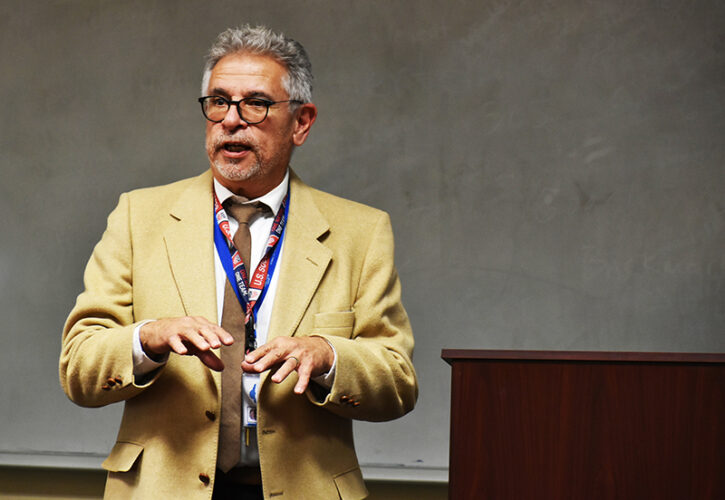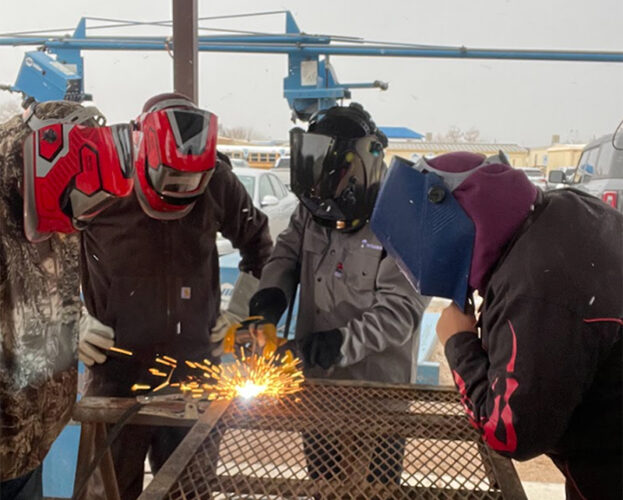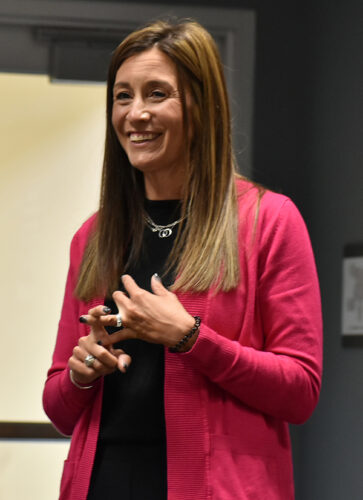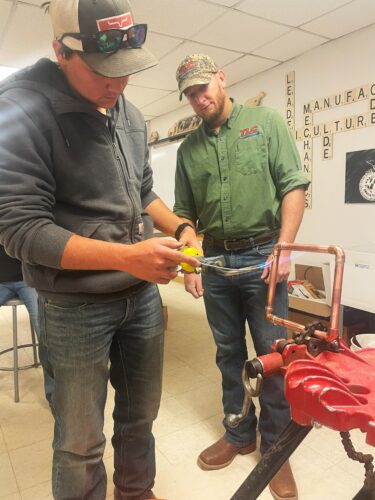LOS LUNAS — School of Dreams Academy held a discussion with various local industry leaders to learn more about the needs of career and technical education in the community and how to create a pathway to meet those needs.
“I’ve always wanted to create a trades program and that’s what we started doing about three years ago,” said SODA Superintendent Mike Ogas. “We want to do something that will support, as well as maybe create, some sort of regional model.”

Mike Ogas
SODA superintendent
SODA was designated as an innovation zone grant recipient last year through the New Mexico Public Education Department along with 46 other schools in the state that applied for the grant.
“An innovation zone school is one where we can make a difference in the focus of our children’s education by changing the mode and medium of learning,” said Ogas. “We are focusing on career and technical education through both on-site and hands-on courses at our facilities and partnerships with local and regional organizations.”
The innovation zone grant can provide funding for up to three years. Ogas said SODA received about $200,000 in 2023 for the first year, and the money for the next two years is dependent on yearly evaluations from the state.
Dr. Arsenio Romero, secretary of the New Mexico Public Education Department, spoke at the discussion held Nov. 1 emphasizing the need for CTE programs that connect students with industry workers for a more hands-on, real-world learning experience.
Romero said creating a new outlook on what it means to be a high school graduate is also something that needs to be focused on.

Students receive hands-on welding instruction at SODA as part of the school’s initiative to introduce students to a wide variety of CTE pathways. SODA Superintendent Mike Ogas said they want to partner with local and regional organizations to further expand their CTE offerings. Submitted photo.
“For so long, we always prepared students for getting ready for a higher ed pathway, but what we’ve failed to do in the last couple decades is ensure students have some basic skills to pursue other pathways,” said Romero, formerly the superintendent at Los Lunas Schools.
Knowing this, Romero said the state created the innovation zone initiative in 2022 to support districts in innovative ideas they have to engage students and expand CTE programs.
“SODA is perfect for (the innovation zone grant) because they’ve been doing innovative things for a long time,” said Romero. “They’ve been able to create a system that was lacking in Valencia County, which is why we have charter schools. SODA is a great example of doing this work and a great example of why they are receiving the innovation zone grant.”

Shannon Watling
SODA agricultural teacher
SODA agriculture teacher Shannon Watling and Justin Salada, SODA’s assistant principal of operations, then took the stage to explain SODA’s innovative approach to CTE.
“We want to look at career and postsecondary success and certification and acquisition of industry skills as the fundamental guide of each secondary student at SODA,” said Salada. “Students can select a CTE pathway that aligns with their personal goals and interests. These classes are no longer considered electives but are scheduled prior to the core classes.”
For example, Salada said if a student is interested in pursuing plumbing the classes for that will be prioritized in the student’s schedule and then core classes will be worked in around that. Upon completion of a CTE pathway, each student will then complete a capstone project or internship with a partnering industry leader.
“So the focus is more on how do we get them to be productive in these careers and in our community rather than let’s just teach them math and see what happens,” said Salada. “So the big innovation really is starting with the end in mind, rather than going from the beginning and working our way there.”
Watling said in sixth through eighth grade is when they will start to focus on creating this pathway with students based upon their interests and values.
“We expose them to every career cluster and pathway available and create a database of what they like and don’t like,” said Watling. “Then a committee of teachers looks at this information and creates an advisory committee for the student.”
Watling said students don’t have to limit themselves to one pathway, they can take multiple at once if they so choose.

A SODA student gets hands-on plumbing experience under the guidance of a TLC employee. Submitted photo.
“This model is more flexible and opens up more options for interests,” said Ogas. “We’re not going to be requiring them to pick a pathway, but that option is there for them.”
SODA already has several CTE offerings including health science, culinary arts and a plumbing class operated in partnership with TLC, but they plan to use feedback from this discussion to help develop more programs.
Beyond the Nov. 1 discussion, Ogas said they are continuing to seek feedback from other industries so they have information to create a wide range of CTE offerings from tech, skilled trades, agriculture and beyond.
The feedback is also important for creating a preliminary rendering of the new school facility they are aiming to build, Ogas said, because it will help inform them on what kind of spaces will be needed to accommodate the hands-on CTE courses.
“We have three years to scale up. Year one involves planning, community engagement, partnerships and implementation of pilot programs while revamping course offerings,” said Salada. “Next year, we’re looking to get more programs involved, engage the community more at large and begin the acquisition of credentials and certifications for students. Year three would be really getting into capstones and getting those courses completed.”
“Every single job that every person has in this community exists in a delicate ecosystem,” said Watling. “We need that garbage truck driver, banker, plumber, grocer, electrician … we need all those positions and it’s OK for the kids to realize one is not more important than the other.”
Felina Martinez was born and raised in Valencia County. She graduated from the University of New Mexico in 2021. During her time at UNM, she studied interdisciplinary film, digital media and journalism. She covers the village of Los Lunas, Los Lunas Schools, the School of Dreams Academy and the town of Peralta.

















